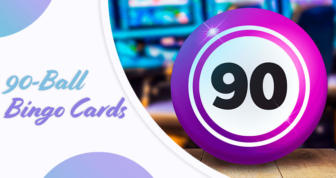
It will have crossed the mind of many bingo players that by buying enough cards, a win should be guaranteed. In fact, if there is a game with a huge jackpot, then you may have been tempted to simply buy all the available cards. However, there are two reasons why this simply isn’t possible.
Firstly, online bingo sites and bingo halls usually impose a limit on how many cards each player can buy. More importantly, it is simply impossible to purchase all possible cards as the number of possibilities is absolutely vast.
If you are playing a standard game of 90-ball, there are an incredible number of theoretical unique bingo cards. In fact, there are 24,069,639,359,475,000 or 24 quadrillion of them.
There are several reasons why it isn’t possible to purchase so many cards. Imagine you are playing in your local bingo hall. If cards could be printed at a rate of 1 per second, that means that it would be possible to print 31,536,000 cards in a year. This means that, with a single machine, it would take 763,228,736 years to print all the possible cards, far longer than the game of bingo has even existed.
Printing so many cards would also be pretty disastrous for the environment. If the average tree can be turned into 10,000 sheets of paper and 10 bingo cards fit per sheet, then one tree can produce 100,000 bingo cards. Therefore, printing all the possible cards would need 240,696,393,595 trees (or 240 billion). It is thought that there are 3 trillion trees currently on the planet, which means that printing all possible bingo tickets would require 8% of the world’s trees.
Of course, this isn’t an issue when playing online. However, never mind the fact that online bingo sites limit how many cards each player can buy; the costs would be astronomical. Even if the tickets were being sold for 1p each, you would need more than £240 trillion!
You may be wondering how the figure of 24 quadrillion was reached. We will try to explain it without becoming too bogged down in mathematics.
To begin with, it is important to remember that a 90-ball bingo card has 3 rows and 9 columns. Each row will contain 5 numbers and 4 blank spaces. The columns 1 to 9 can contain the numbers 1-9, 10-19, 20-29, 30-39, 40-49, 50-59, 60-69, 70-79, and 80-90, respectively.
In order to simplify things, we will only be counting cards that are distinct from one another within a single game. This means that we will not be considering cards that feature the same numbers but in slightly different positions, as these cards would win at the same moment.
Each bingo card will feature 15 numbers; however, the layout of the cards adds a degree of complexity to the calculation. There are two reasons for this:
This means that when calculating the number of possible bingo cards for a game, first, it is necessary to calculate the number of distinct layouts. Then, it is possible to calculate how many possible number selections there are for each layout.
First, we need to look at the number of combinations possible along each row. Each row will contain 5 numbers and 4 blank spaces. This means that we are choosing 5 numbers from 9 possibilities.
If you remember secondary school maths, then you will know that the formula for calculating the number of possible combinations is:

In this instance, n is the number of possibilities and r is the number of selections being made.
Therefore, n = 9 (9 possible numbers) and r = 5 (the amount of numbers being chosen). Following this through, there are 126 combinations for each row.
However, a bingo card contains three rows, so we need to calculate the unique possibilities over all three rows.
The next stage is where things become a little bit more complicated than most people feel comfortable with. However, using almost any computer scripting language (or any language, in actual fact), it is possible to add the rows together and compare the unique patterns that can be formed with the 9 columns. This results in 27,876 combinations. It is also necessary to know how many numbers are in each column for each of the layouts in order to calculate the number of unique bingo cards.
If you consider a column on a bingo card that has two blank spaces, there are still a number of possibilities for the one space that does have a number. Therefore, for each possible layout that was determined above, it is necessary to calculate the number of different possibilities for each column.
This can be done using the same formula as above. You then add the total number together to reach the number of possible unique bingo cards.
Obviously, this is not something that can be easily done using paper and pencil; however, it is the kind of task that computers can do very easily, and that is how the above number of 24,069,639,359,475,000 was reached.
If you are a keen mathematician and computer programmer, then it won’t take you long to write the code needed to carry out this calculation. It is also readily available online, so you can easily check it for yourself. Alternatively, you can simply log on to your favourite online bingo site, buy a number of bingo cards that you can comfortably afford, and then enjoy the thrill of the game.